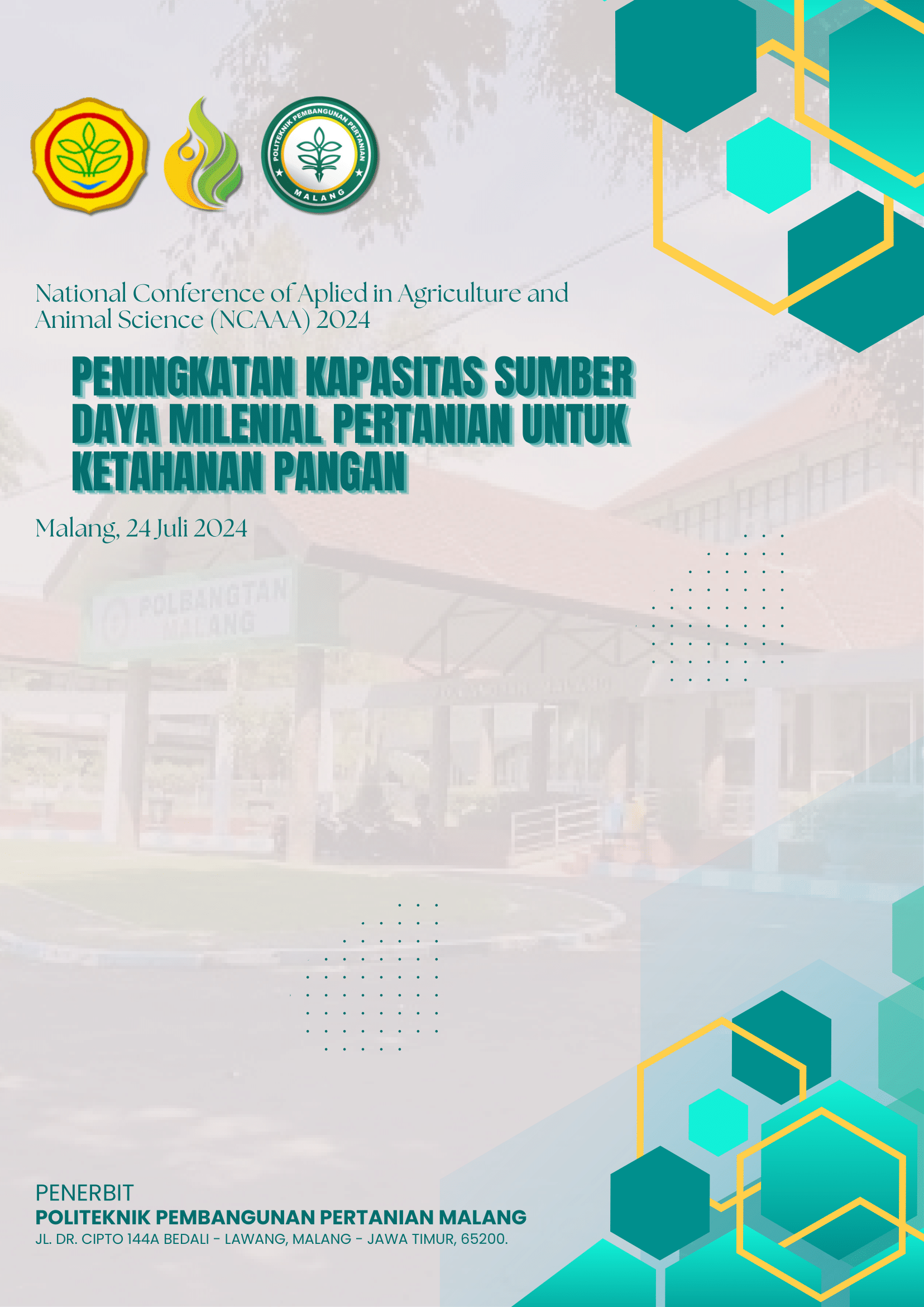Evaluasi Pengetahuan dan Sikap Peternak Terhadap Inovasi Pembuatan Pupuk Vermikompos di Kelompok Ternak Bahagia Sejahtera
Abstract
ABSTRAK
Populasi ternak sapi potong di Kelompok Ternak Bahagia Sejahtera sebanyak 69 ekor dengan rata-rata kepemilikan ternak 3 - 4 ekor. Satu ekor sapi dapat menghasilkan feses 8 -10 kg/hari, jika dikalkulasikan dengan jumlah ternak yang ada maka produksi feses yang dapat dihasilkan adalah 690 kg/hari. Hasil observasi menunjukkan, feses yang dihasilkan dibuang disekitaran kandang dan dibiarkan menumpuk selama ber bulan-bulan, pemanfaatan masih dilakukan secara tradisional dimana sebagian limbah dimasukkan dalam karung untuk dijadikan pupuk dan ada yang dibakar. Manajemen tersebut tentunya kurang efektif untuk mengurai limbah feses sapi yang dihasilkan, limbah feses sapi sangat berpotensi untuk dimanfaatkan menjadi pupuk vermikompos. Namun kurangnya pengetahuan dan motivasi peternak menjadi penyebab belum optimalnya pemanfaatan limbah feses sapi menjadi pupuk vermikompos. Penelitian ini bertujuan untuk mengetahui tingkat pengetahuan dan sikap peternak tentang pembuatan pupuk vermikompos menggunakan cacing Lumbricus rubellus. Metode penelitian deskriftif kuantitatif, Teknik pengambilan sampel yaitu purposive sampling, didapatkan responden sebanyak 30 orang. Hasil penelitian menunjukkan sebelum pelaksanaan penyuluhan tingkat pengetahuan sasaran berada pada kategori memahami. Setelah pelaksanaan post test penyuluhan termasuk kategori menerapkan. Penyuluhan kedua tingkat pengetahuan sasaran berada pada kategori mengkreasi. Hasil tingkat aspek sikap menunjukkan bahwa sebelum pelaksanaan penyuluhan kategori responden yaitu menanggapi. Kemudian setelah pelaksanaan post test termasuk dalam kategori menilai. Setelah Penyuluhan kedua termasuk kategori mengorganisir.
ABSTRACT
The population of beef cattle in the Bahagia Sejahtera Livestock Group is 69 heads with an average ownership of 3 - 4 cattle. One cow can produce 8-10 kg/day of faeces, if calculated with the number of livestock available, the production of faeces that can be produced is 690 kg/day. Observations show that the faeces produced are dumped around the cage and left to accumulate for months, the utilisation is still done traditionally where some of the waste is put in sacks to be used as fertiliser and some are burned. This management is certainly less effective in breaking down the cow faeces waste produced, cow faeces waste has the potential to be used as vermicompost fertiliser. However, the lack of knowledge and motivation of farmers is the cause of the unoptimal utilisation of cow faecal waste into vermicompost fertiliser. This study aims to determine the level of knowledge and attitudes of farmers about making vermicompost fertiliser using Lumbricus rubellus worms. Quantitative descriptive research method, sampling technique is purposive sampling, obtained 30 respondents. The results showed that before the implementation of counselling the target knowledge level was in the understanding category. After the implementation of the extension post test, it was in the category of applying. The second extension of the target knowledge level is in the creation category. The results of the level of attitudinal aspects showed that before the implementation of counselling the category of respondents was responding. Then after the implementation of the post test is included in the category of assessing. After the second extension included the category of organising.

